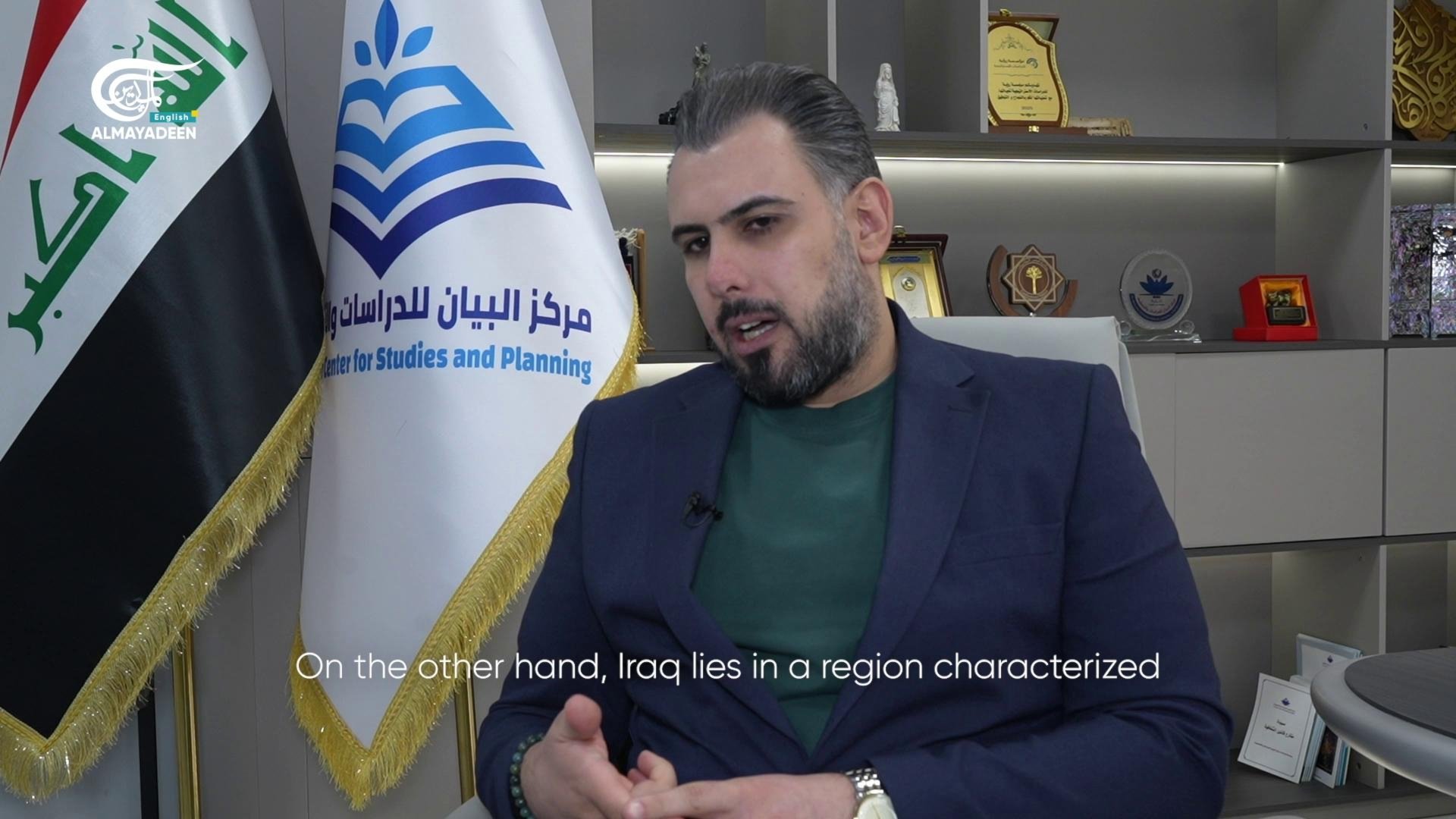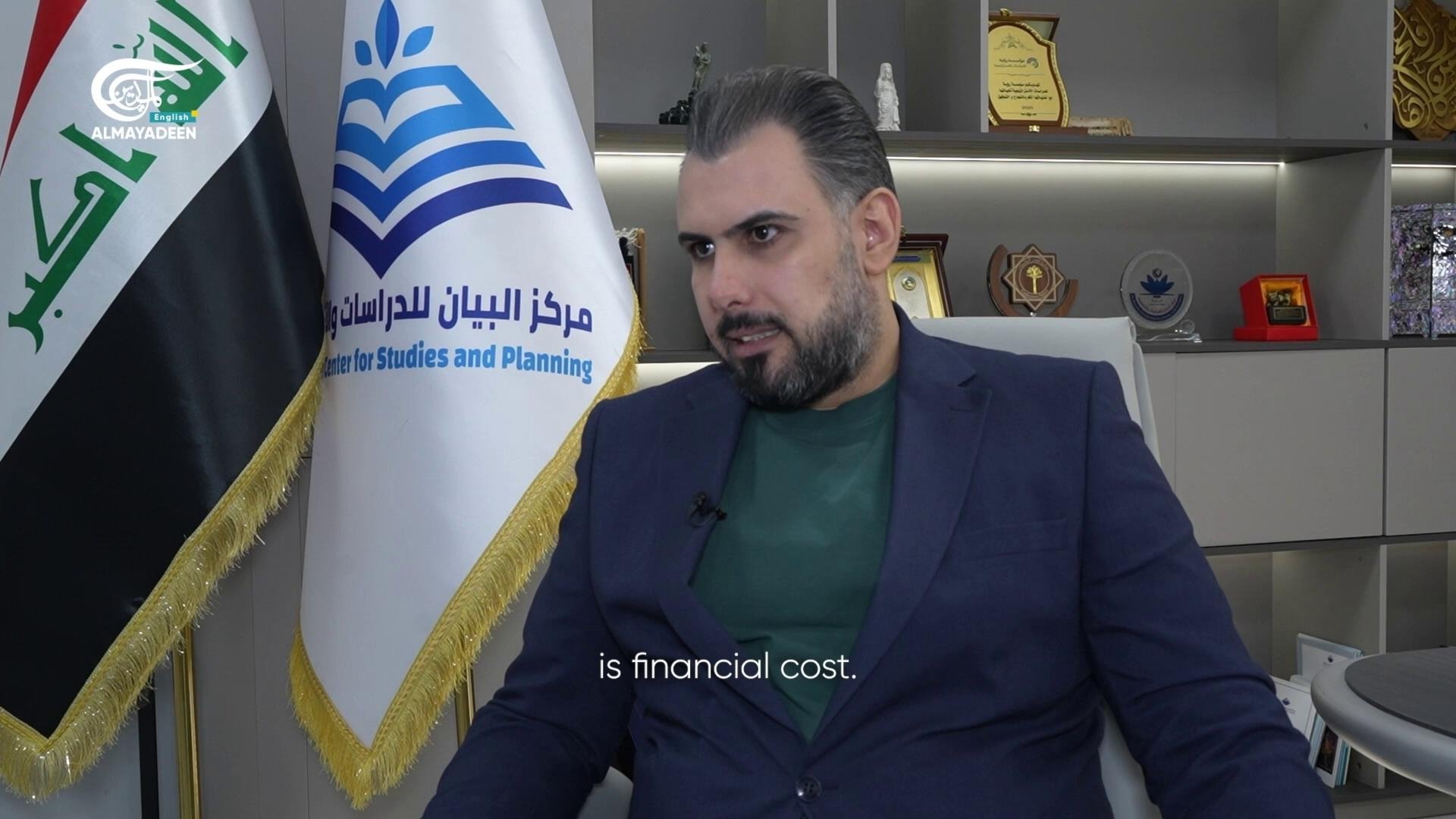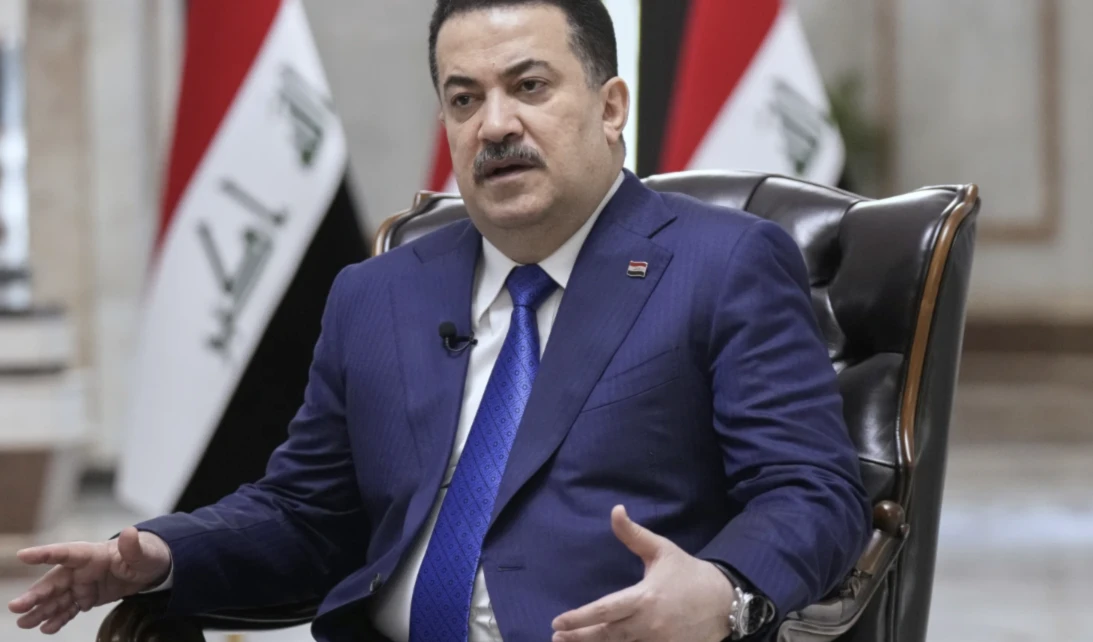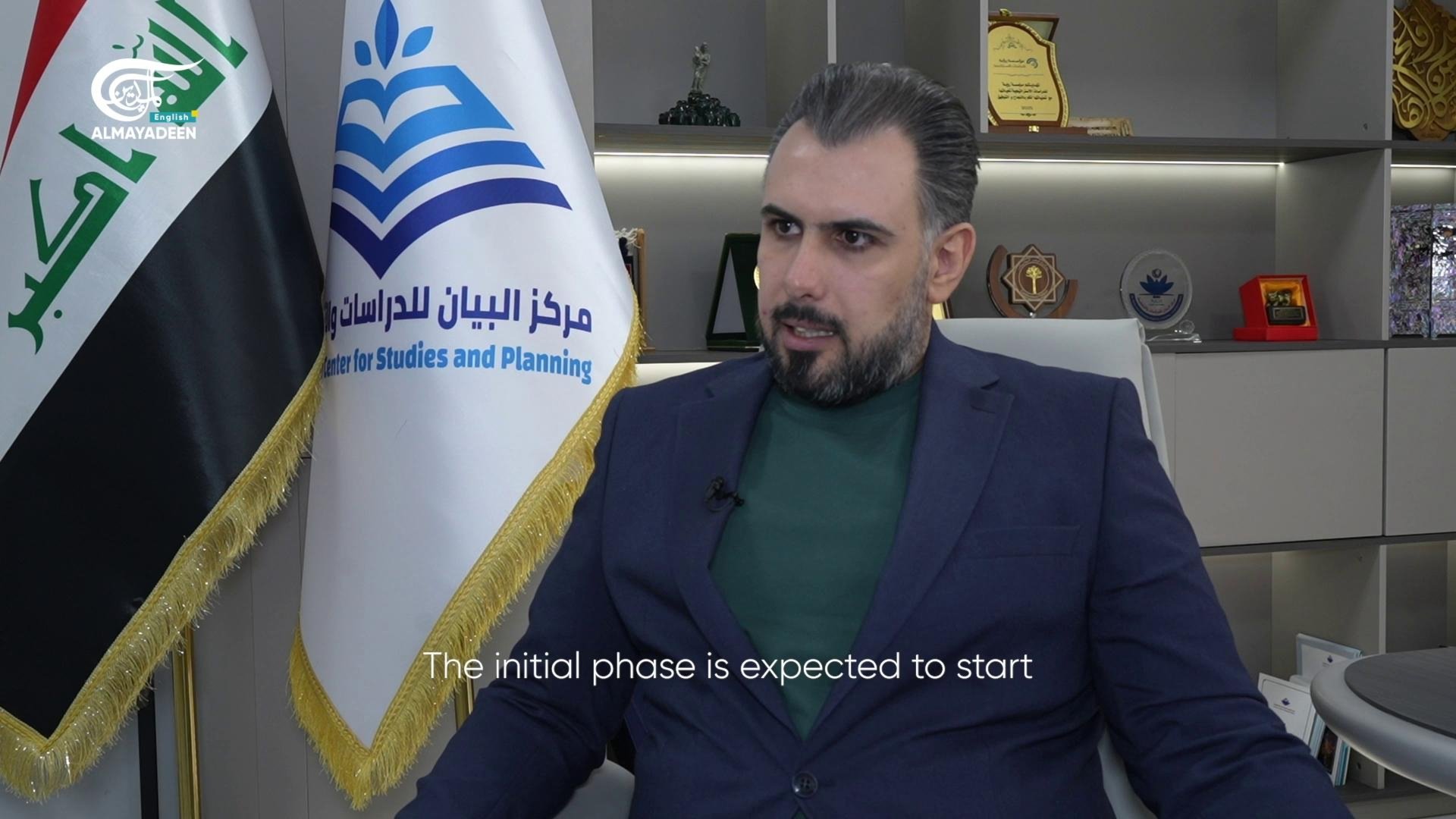Iraq’s Development Road: between vision and geopolitics: Exclusive
Iraq’s Development Road Project represents a bold effort to reshape the country’s economic and geopolitical future. Based on Mustapha al-Sarray's insights, while Iraq seeks to boost commerce, diversify its economy, and emerge as a key hub connecting the Gulf, Turkey, and Europe, the country faces internal and external challenges.
-
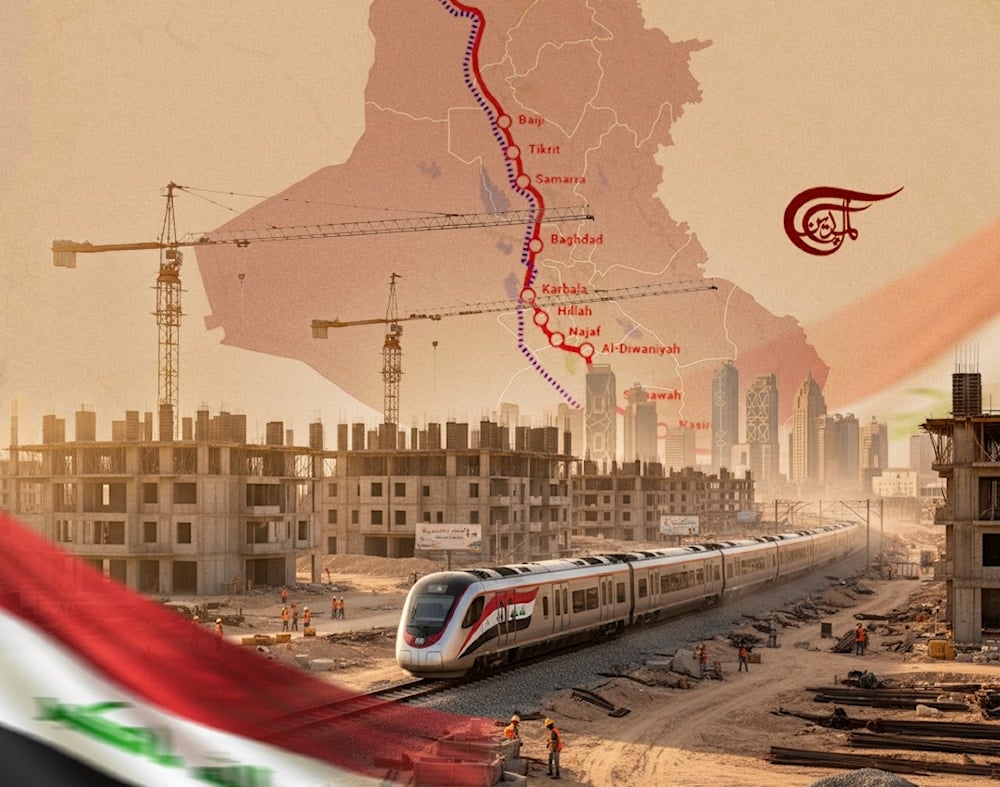
Illustration of the Development Road project set to be established in Iraq and reach neighboring countries. (Illustrated by: Al Mayadeen English/Mahdi Rteil)
In recent years, Iraq has aimed to redefine its geopolitical and economic role through the Development Road Project, a transnational corridor envisioned to connect the Gulf region to Turkey and Europe. Announced by the Iraqi Prime Minister in 2023, the project aims to take advantage of Iraq's geographic centrality, transforming the country into a regional trade hub.
According to Mr. Mustapha al-Sarray, the head of Al Bayan Center for Studies and Planning, there are multidimensional implications for the project, geographic, political, and economic, that reflect on the challenges Iraq should overcome to implement its vision.
Al-Sarray underscores that Iraq's geography remains both its greatest asset and its most persistent vulnerability. Situated at the heart of West Asia and between Asia and Europe, Iraq has historically served as a crossroads for ancient and modern trade alike.
He recalls that the idea of connecting Iraq eastward and westward dates back to the Berlin-Baghdad Railway of 1889, conceived under an agreement between Germany and the Ottoman Empire. This vision, later pursued in various forms across the 20th century, highlights Iraq's recurring role as a bridge between markets.
Domestic political and economic challenges
Despite the ambitious project, al-Sarray identified several internal and external factors that threaten implementation.
Internal factors include economic and political challenges. The Development Road carries an estimated cost of $17 billion, most expected to be procured from Iraq's state budget. Given the country's reliance on oil revenues and vulnerability to global price fluctuations, al-Sarray views economic stability as the first challenge.
Shedding light on political priorities and corruption, Iraqi governance has often redirected focus away from long-term planning. Between 2014 and 2018, for example, security threats from terrorist acts disrupted almost all strategic projects. Al-Sarray warned that changing political agendas could again delay the Development Road's progress if upcoming governments do not maintain commitment.
Additionally, corruption is seen as an obstacle for foreign investors and complicates contracting. Addressing this, he argues that robust governmental oversight and legal guarantees are required to protect incoming companies.
With regard to security concerns, certain segments of the planned route reach regions prone to instability. Sustained security is, therefore, a precondition for development and smooth operation. Without it, both investors and partner states would remain hesitant to fully engage in the project.
He emphasized that Iraq's success depends on achieving fiscal, political, and security coherence simultaneously.
External dimensions and regional competition
Beyond Iraq's borders, he highlights several external pressures shaping the project. The Development Road may compete or intersect with trade routes preferred by neighboring states such as Iran, raising concerns.
Although Qatar and the UAE have already joined the initiative, other Gulf states, Kuwait and Saudi Arabia in particular, remain uncertain in their positions, reflecting the project's unfinished diplomatic groundwork.
He explained that the proposed corridor could reduce transit time between Asia and Europe to 12-15 days, compared to 22-40 days through the Suez Canal, which would significantly lower transport costs and boost logistical competitiveness.
Global power dynamics
Both Russia and China support the project, Moscow viewing it as a path around Western sanctions, and Beijing seeing it as complementary to the Belt and Road Initiative, despite Iraq insisting that the two remain separate.
Moreover, competition with the Saudi-Indian Economic Corridor, endorsed by the United States and its allies, represents another set of challenges. Iraq, al-Sarray suggests, must rely on “economic diplomacy” to secure recognition and investment from global powers.
US position: Ambiguity and conditional engagement
Regarding Washington's stance, he notes that the US position remains ambiguous. Since the Development Road's construction stages have yet to begin, estimated to start in late 2025 or mid-2026, official responses have been minimal.
However, he points out that the United States maintains two core interests in Iraq: security cooperation and the participation of US companies in the oil and energy sectors. These factors could pave the way for US involvement as a stabilizing partner or neutral observer in the project.
Al-Sarray concluded that the Development Road is Iraq's largest and most strategic national project, suggesting that its success could fundamentally reshape the Iraqi economy.
The project's key potential benefits include:
- Reducing Iraq’s dependence on oil revenues and promoting economic diversification.
- Creating sustainable stability by encouraging investment, industrial development, and urban growth.
- Building modern industrial cities along the route, fostering direct employment and regional integration.
He asserts that Iraq's future prosperity depends on this shift from resource dependency to productive engagement, grounded in infrastructure, trade, and regional interconnection.
The Development Road embodies both Iraq's regional aspirations and its structural constraints. For al-Sarray, it combines the legacies of Iraq's geography, history, and political endurance. Success will demand consistent governance, anti-corruption reform, and diplomacy to balance relations with Iran, the Gulf states, Turkey, and global powers.
Should Iraq manage to sustain these prerequisites, the Development Road could transform from a symbolic grand project into the foundation of a new economic order for the country and the region.

 5 Min Read
5 Min Read
